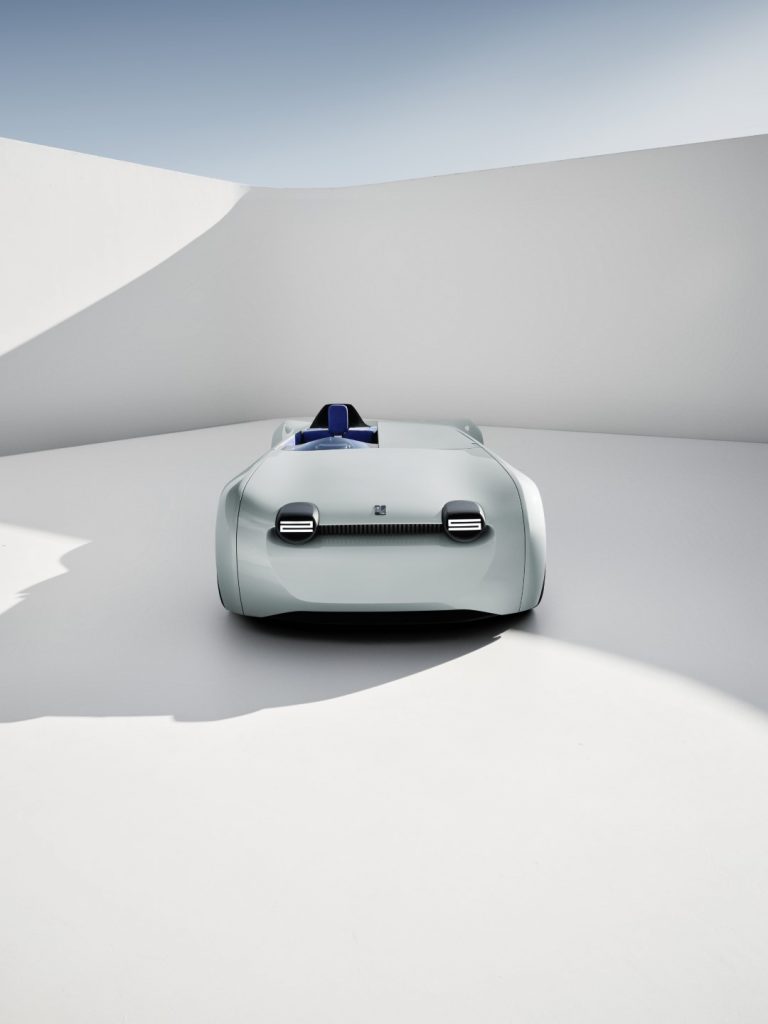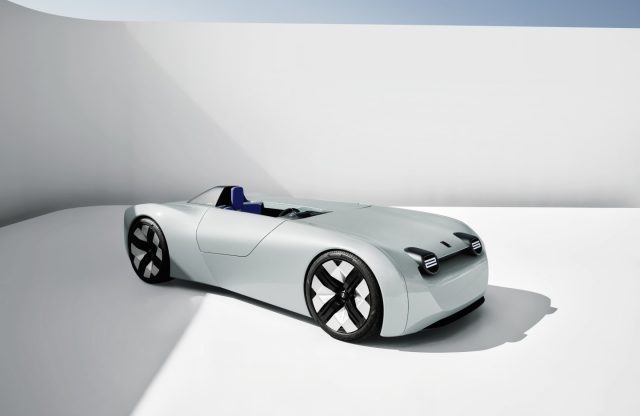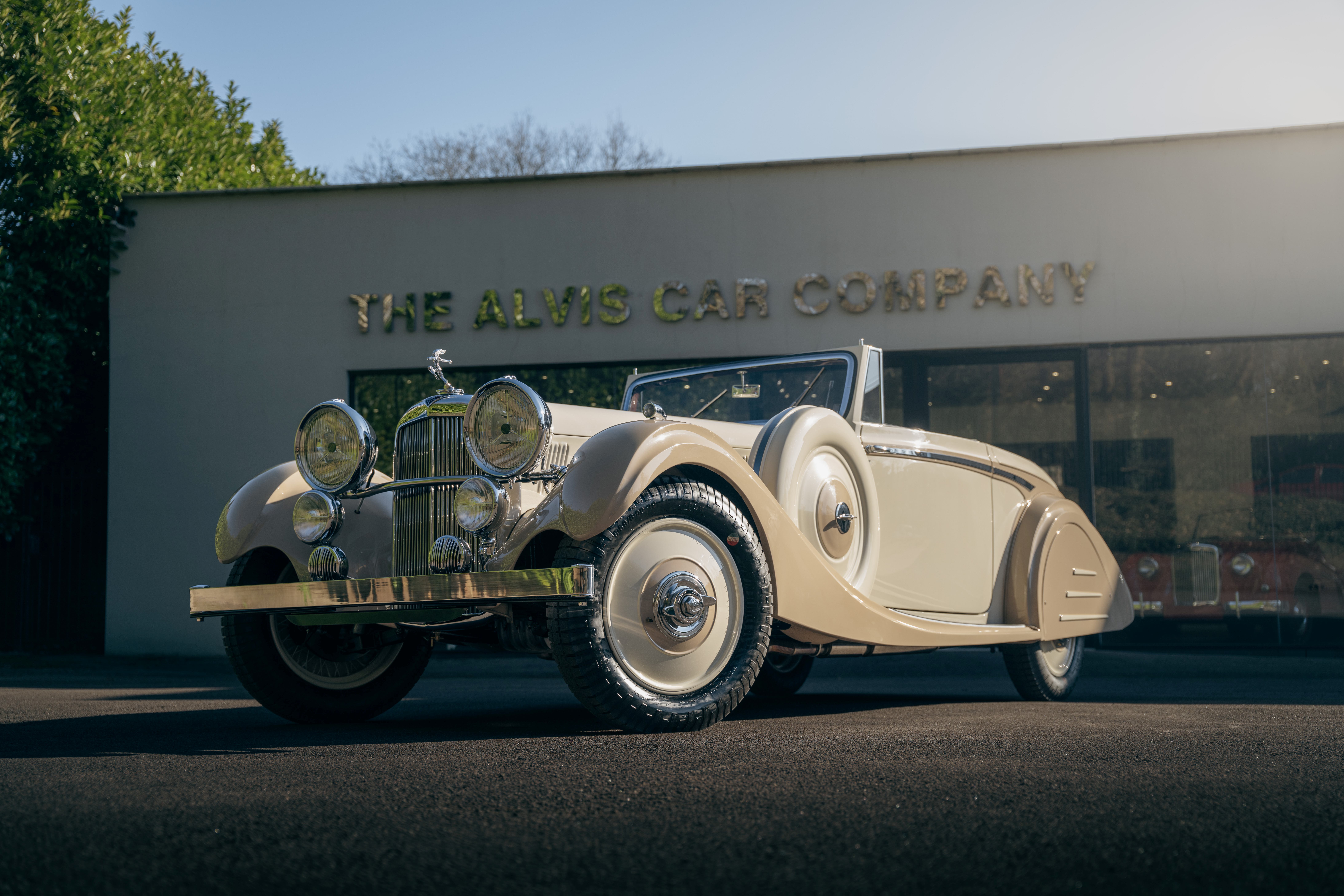WORDS: TIM PITT | PHOTOS: MAKKINA
Write a list of things you expected to read in 2023 and ‘Triumph returns’ probably isn’t one of them. However, this year marks the 100th anniversary of the British marque, and 70 years since a Triumph TR2 broke the production-car speed record. Revealed today in London, the electric TR25 is a futuristic reimagining of Triumph’s past.
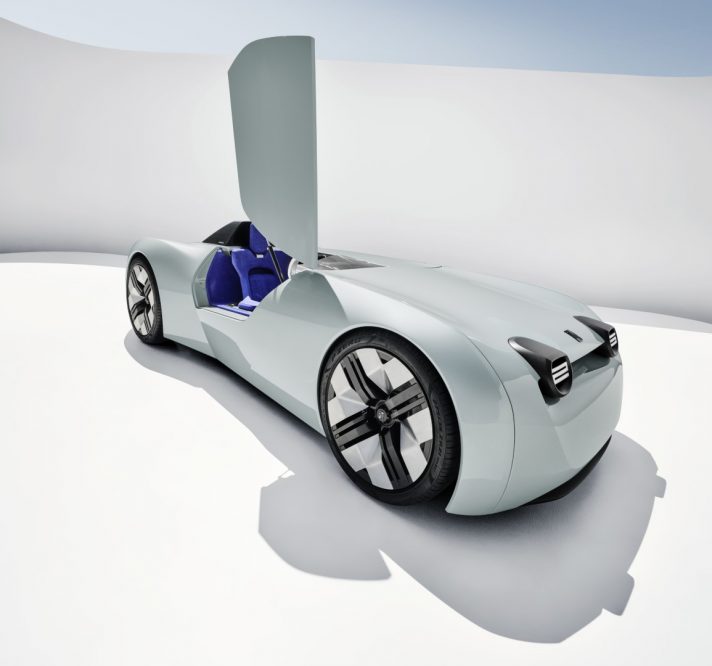
Bug-eyed headlamps and friendly face hark back to the 1953 original
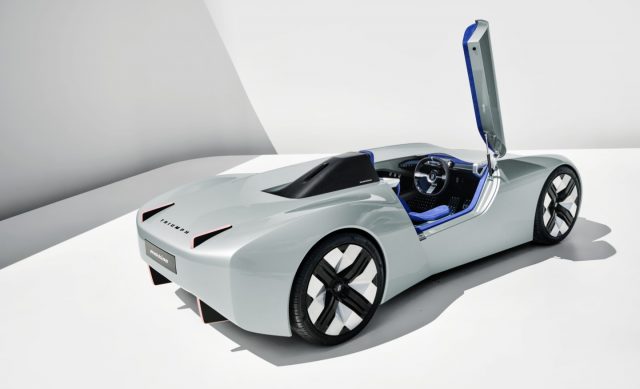
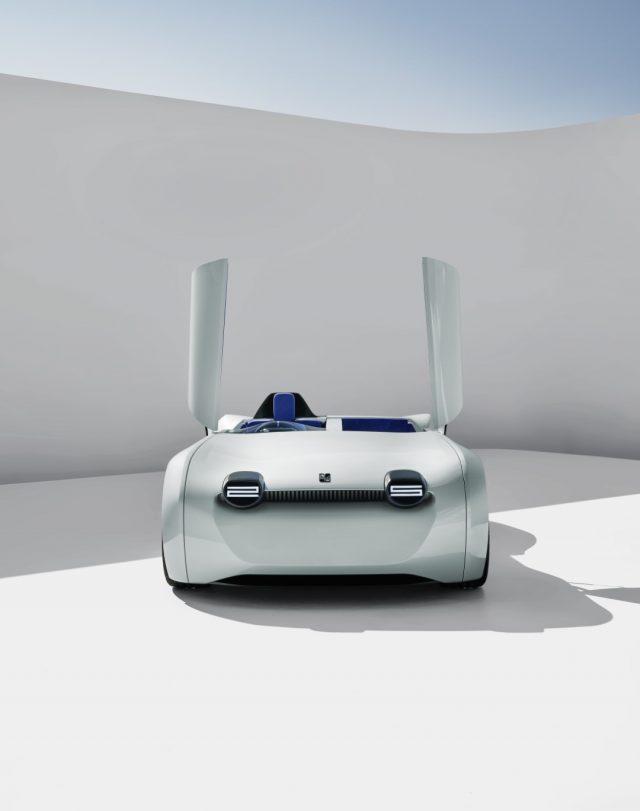
The TR25 also celebrates a third anniversary: 25 years of the Makkina design house. Usually found working behind the scenes for major car manufacturers, this is the company’s first public-facing project. It was created with the blessing of the BMW Group, which owns the rights to the Triumph name. And while this is very much a concept, the number of senior Munich suits attending the TR25 unveiling suggests a Triumph comeback isn’t impossible.
Inspiration for the TR25 comes from the famous ‘Jabbeke’ TR2, which reached its record-breaking speed of 124.889mph on Belgium’s Jabbeke highway in 1953. Triumph aimed to beat the 120mph achieved by a Sunbeam Alpine, and was so confident of success that it invited numerous reporters to witness the event. The original record car now resides at the British Motor Museum in Gaydon.
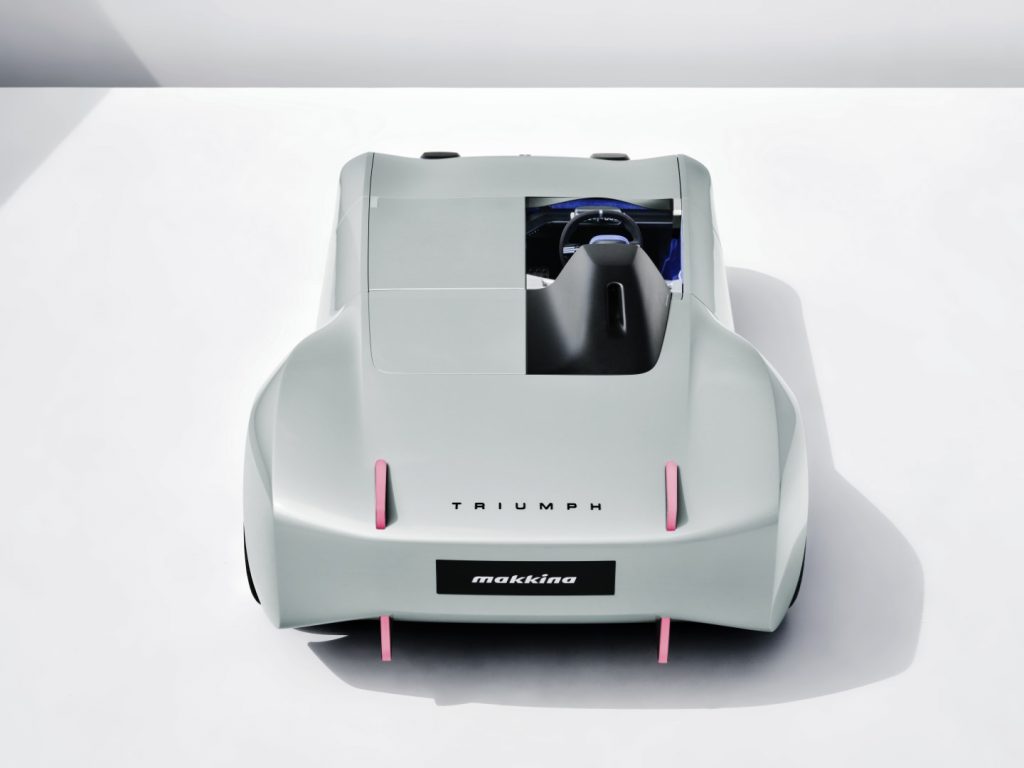
While the classic Triumph used a 90bhp 2.0-litre four-cylinder engine, Makkina’s 21st century tribute borrows its electric drivetrain from a BMW i3S. That means a 42.2kWh battery and 184bhp electric motor driving the rear wheels. With a kerbweight of only 1090kg (impressively light for an EV), it sprints to 62mph in just 5.3 seconds. A flat-out maximum of 115mph won’t break any speed records, however.
The tricks Triumph used to make the TR2 go faster included rear wing spats and a metal cockpit cover. The TR25 does without the former, but it retains a single-seat layout to “emphasise the fact that this car is about pure driving pleasure”. A small flyscreen directs airflow over the driver’s head, while the rear buttress contains a reversing camera. If necessary, the top panel can be removed, revealing a flip-out jump seat suitable for short journeys.
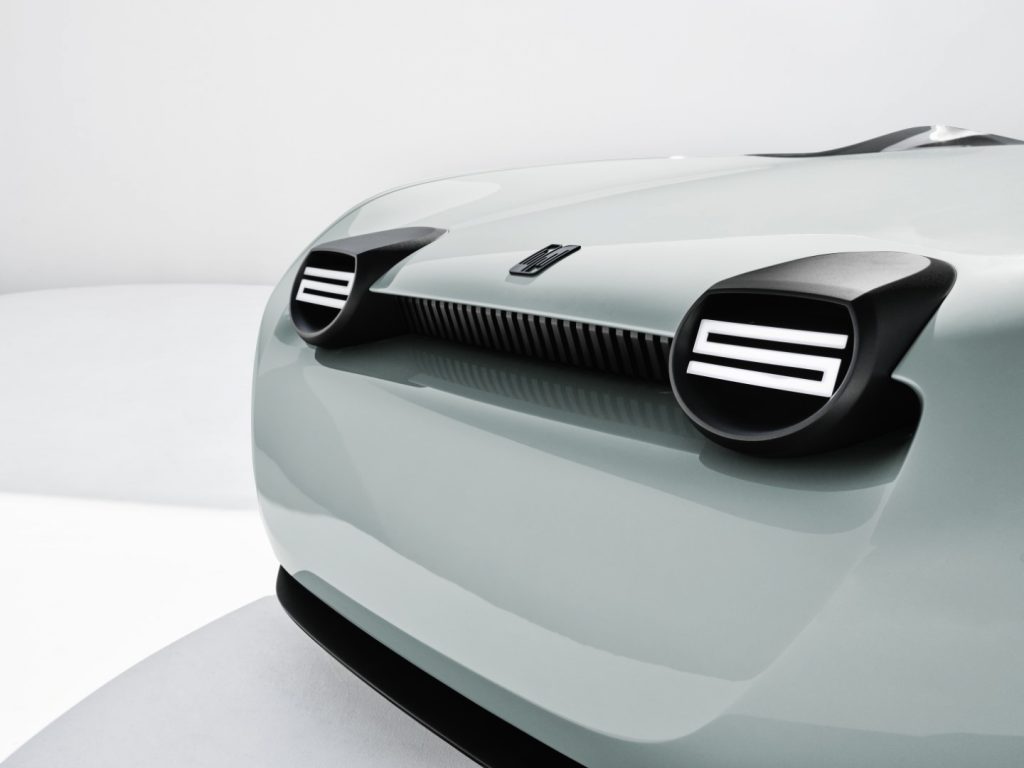
The reborn Triumph’s bug-eyed headlamps and friendly face also hark back to the 1953 car, but its vertically opening doors, sculpted 21in wheels and slim LED taillights look markedly modern. The chassis and body panels are made from carbon fibre, suspended on aluminium subframes. Makkina claims near-perfect weight distribution for “superior handling on the roads it’s designed to tackle”.
Climb over the TR25’s wide sill and you drop into a low-slung blue leather seat. This remains fixed, but the steering wheel and pedals both adjust, so even drivers over six feet can get comfortable. There’s plenty of bare metal on display, along with a pleasing lack of screens. The lovely, retro-look wheel has touch controls on its horizontal spokes that offer access to navigation settings and driving data. A large central spine improves the car’s rigidity and provides a home for three toggle switches, used to select the various drive modes.
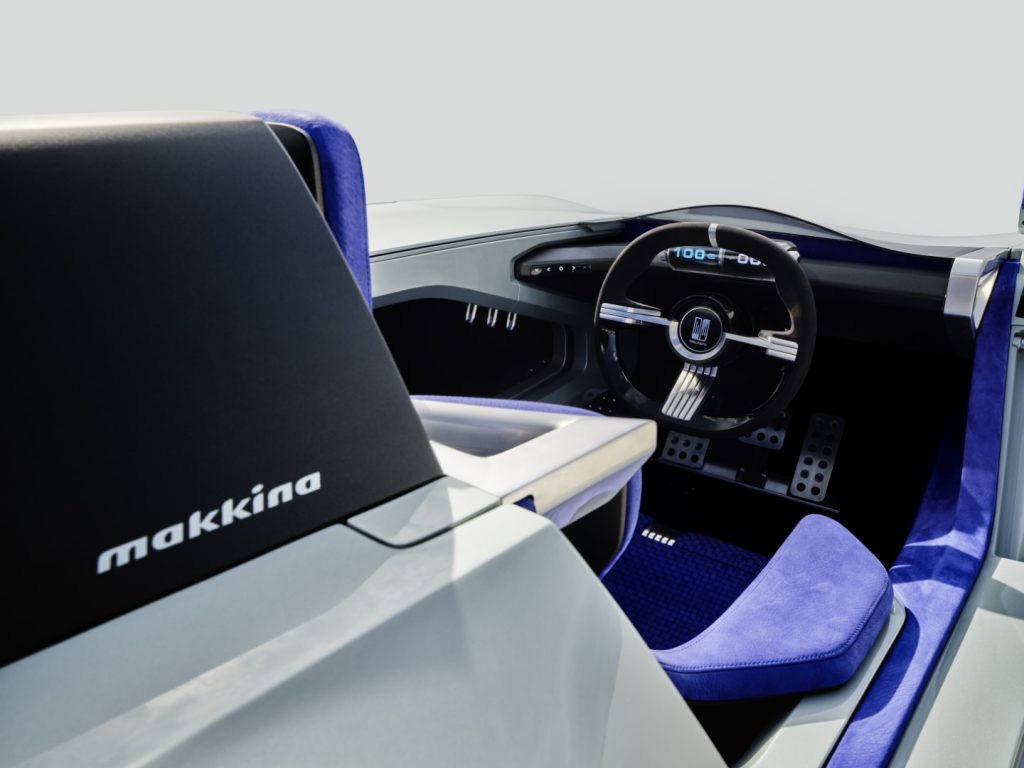
The decision to base the concept around a BMW i3S came from Makkina founder and director Michael Ani, who first bought an i3 at the 2013 Frankfurt Motor Show and has been driving them ever since. “The i3S platform proves that driving an electric car can be fun,” he said. “The combination of instant torque, acceleration, agility and silence are as compelling now as ever.”
A back-to-basics sports car certainly appeals, but whether the TR25 will get beyond the concept stage is another question. As for the Triumph badge, BMW has successfully reinvented two British brands – Mini and Rolls-Royce – but the memory of selling off Rover to the Phoenix Consortium for a paltry £10 must still linger. Whatever happens next, Makkina’s vision proves that EVs definitely needn’t be dull.
